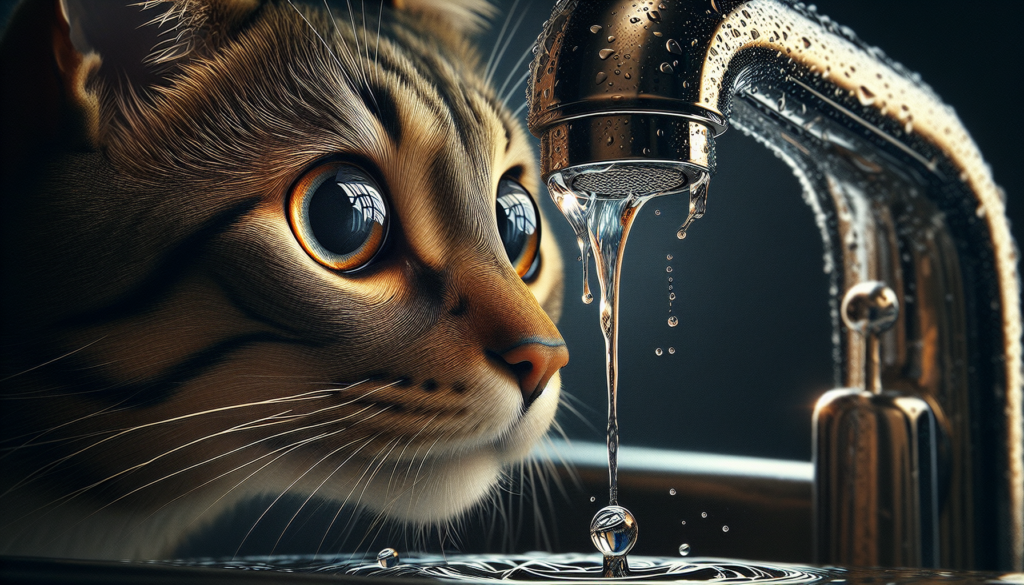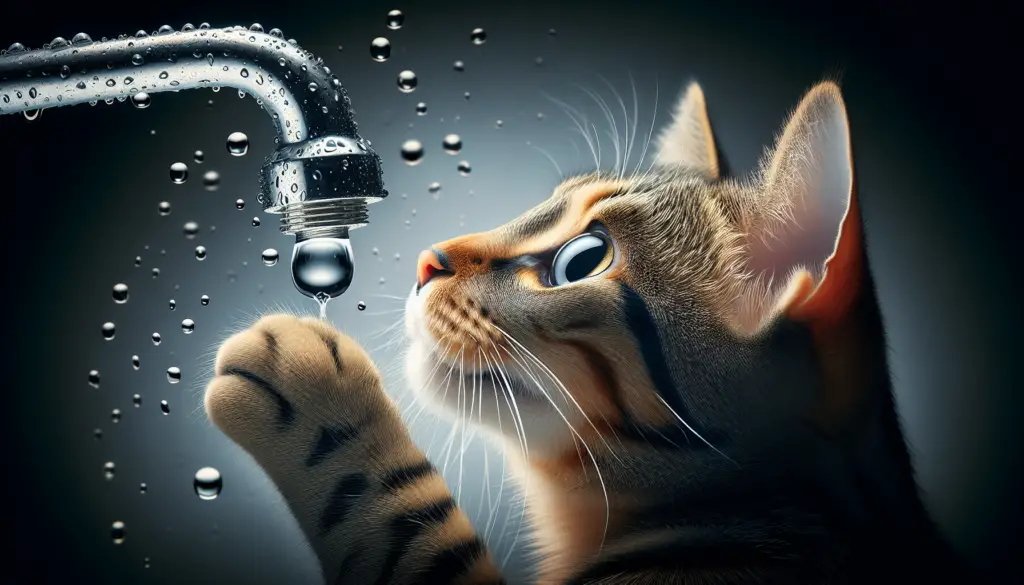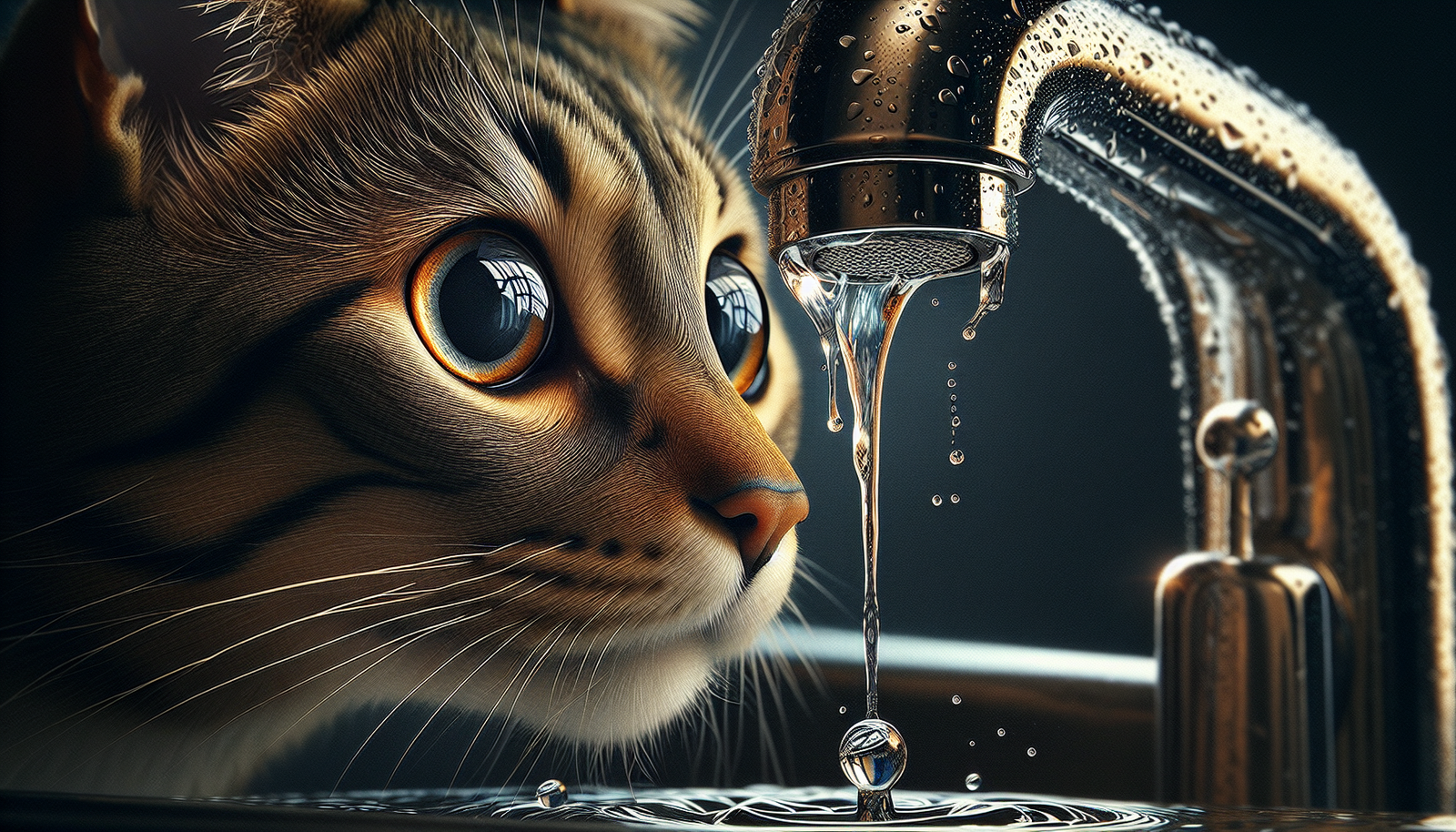You might be curious about whether tabby cats have a fondness for water, and it turns out that their preference can vary from feline to feline. While some tabbies may despise even a mere droplet touching their fur, others surprisingly find solace in the soothing embrace of water. Whether it’s the thrill of a gentle shower or the playful splashing in a shallow pool, these fascinating creatures can surprise you with their unique water-loving quirks. So, let’s take a closer look at the intriguing world of tabby cats and their relationship with water.

Physical Characteristics of Tabby Cats
Striped Coats
Tabby cats are known for their unique coat patterns characterized by distinct stripes. These stripes can vary in thickness, length, and color, giving each tabby cat its own individual look. The striped coat pattern is one of the most recognizable and defining features of tabbies, adding to their charm and appeal.
Distinct Colors
In addition to their striped coats, tabby cats come in a wide variety of colors. From the classic brown tabby to the more rare silver tabby, these cats display a range of hues that are not only visually appealing but also contribute to their overall physical beauty. Whether you prefer a tabby with warm, earthy tones or a tabby with a more subdued and cool color palette, there is a tabby cat to suit everyone’s taste.
M (Mackerel) Pattern
One of the most common coat patterns found in tabby cats is the M or mackerel pattern. This pattern is characterized by narrow, vertical stripes on the cat’s body that resemble the shape of an M when viewed from above. The M pattern is often seen on the forehead of a tabby cat, further adding to their unique and distinct appearance.
Classic (Blotched) Pattern
Another popular coat pattern found in tabby cats is the classic or blotched pattern. This pattern consists of large, swirling patches or blotches of color on the cat’s body. The classic pattern creates a more symmetrical and defined look compared to the M pattern, giving tabby cats a regal and elegant appearance.
Ticked Pattern
The ticked pattern is yet another coat variation seen in tabby cats. This pattern is characterized by individual hairs that are banded with different colors, creating a salt-and-pepper effect. The ticked pattern is most commonly observed in breeds like the Abyssinian and Somali, adding a touch of sophistication and uniqueness to these already stunning cats.
Tabby Cats and Their Relationship with Water
Tabby Cats and Water: A Common Stereotype
It is often said that cats, in general, are not fond of water, and tabby cats are no exception to this stereotype. Many people believe that tabby cats have an aversion to water and tend to avoid it at all costs. However, it is crucial to remember that not all tabby cats are the same, and individual preferences can vary greatly.
Exploring Tabby Cats’ Attitude Towards Water
While it is true that some tabby cats may shy away from water, others may actually enjoy it to some extent. Each cat has its own unique personality, and this extends to their relationship with water. Some tabbies may be curious and cautiously explore water sources, while others may be more adventurous and even engage in water-related activities such as playing with dripping faucets or pawing at sprinklers.
Tabby Cats and Water: Debunking Stereotypes
Understanding Individual Variation in Preferences
When it comes to tabby cats and their affinity or aversion to water, it is vital to recognize that individual variation plays a significant role. Just as not all humans have the same preferences, the same applies to cats. While some tabby cats may genuinely dislike water, others may find it intriguing or even enjoyable. Respecting their individual preferences is crucial in fostering a positive relationship with water.
Tabby Cats vs. Other Breeds
While tabby cats as a whole do not collectively exhibit a greater or lesser love for water compared to other breeds, each individual cat may have its own preferences. Some tabby cats may be more inclined to explore water compared to other breeds, but this is not a universal trait. It is essential to treat each cat as an individual and not make assumptions based on breed stereotypes.
Potential Influencing Factors
Several factors may contribute to a tabby cat’s water preferences. Early experiences and socialization can play a significant role, as cats exposed to positive water-related encounters from a young age may be more accepting of water later in life. Genetic predispositions may also impact a cat’s reaction to water, as certain breeds may have a natural inclination towards water-related activities. Additionally, environmental conditions and temperature can influence a cat’s willingness to engage with water.
Importance of Hydration for Tabby Cats
The Significance of Water for Cats’ Health
Proper hydration is crucial for a cat’s overall health and well-being, and tabby cats are no exception. Water plays a vital role in various bodily functions, including digestion, metabolism, and temperature regulation. By ensuring that your tabby cat stays adequately hydrated, you are helping to maintain their overall health and supporting their body’s natural processes.
Hydration and the Role of Diet
Dietary choices can also impact a tabby cat’s hydration levels. By providing a balanced diet that includes moisture-rich foods such as wet cat food or incorporating wet food into their diet, you can supplement their water intake. This can help ensure that your tabby cat receives the necessary hydration to support their overall health.
Encouraging Hydration in Tabby Cats
To encourage proper hydration in tabby cats, it is essential to provide them with fresh and clean water at all times. Some cats prefer running water or may even enjoy drinking from a dripping faucet. Investing in a cat water fountain or regularly refreshing their water source can help pique their interest and encourage them to drink. Additionally, incorporating wet food into their diet can increase their overall water intake.

Factors Influencing Tabby Cats’ Water Preferences
Early Experiences and Socialization
Early experiences and socialization can shape a tabby cat’s attitude towards water. If a cat has positive encounters with water from a young age, such as gentle introductions during bath time or interactive play near water sources, they may be more accepting and even curious about water as they grow older. Conversely, negative experiences or lack of exposure to water may contribute to fear or aversion.
Genetic Predispositions
Certain breeds may have genetic predispositions towards water-related activities. For example, the Turkish Van breed is known for its love of swimming and may be more inclined to enjoy water compared to other tabby cats. These genetic factors can influence a cat’s behavior and preferences, but individual variation within each breed is still significant.
Temperature and Environmental Conditions
External factors such as temperature and environmental conditions can impact a tabby cat’s water preferences. Cats may be more inclined to seek out water sources or engage in water-related activities during hot weather, as water can help cool them down. Additionally, cats may be more interested in water play if they have access to outdoor environments with natural sources of water, such as puddles or streams.
Tips for Introducing Water Activities to Tabby Cats
Starting Slowly
If you wish to introduce water activities to your tabby cat, it is crucial to start slowly and respect their comfort levels. Begin by allowing them to explore water sources at their own pace, such as leaving a shallow dish of water within their reach. Gradually introduce them to other water-related activities, such as providing them with a dripping faucet to investigate or incorporating water into their playtime routine.
Using Positive Reinforcement
Positive reinforcement is key when introducing new experiences to your tabby cat. Reward them with treats, praise, or playtime whenever they show curiosity or engagement with water. This will help create a positive association between water and enjoyable experiences, making them more likely to approach water willingly in the future.
Providing Comfortable Water Sources
To encourage your tabby cat to engage with water, it is essential to provide comfortable and accessible water sources. Choose water dishes that are the appropriate size and depth for your cat and ensure they are easily accessible throughout the house. Consider investing in a cat water fountain if your cat shows a preference for running water.
Water Activities: Swimming and Bathing
Swimming: Tabby Cats’ Natural Abilities
While not all tabby cats are natural swimmers, some may possess a fascination or talent for swimming. Breeds such as the Turkish Van have a reputation for enjoying water and may even actively swim if given the opportunity. However, it is crucial to remember that not all tabby cats will exhibit this behavior, and it should never be forced upon them.
Bathing: Personal Preferences and Techniques
Bathing can be a polarizing topic for tabby cats and their owners. While some tabbies may tolerate or even enjoy the occasional bath, others may have a strong aversion to it. If you do need to bathe your tabby cat, use a gentle approach and ensure the water is at a comfortable temperature. Gradually introduce them to the bath and offer plenty of positive reinforcement to help create a more positive bathing experience.
Outdoor Adventures: Rain and Puddles
Rainy Days and Tabby Cats’ Reactions
Rainy days can elicit a range of reactions from tabby cats. Some tabbies may be curious and enjoy watching the rain from the safety of indoors, while others may venture outside to experience the rain firsthand. It is essential to monitor your cat’s behavior and ensure they are not exposed to any uncomfortable or unsafe conditions during rainy weather.
Discovering Puddles and Water Play
Puddles can present an exciting opportunity for tabby cats to engage in playful water activities. Some cats may enjoy splashing in puddles or pawing at the water’s surface. However, it is crucial to ensure their safety, as certain puddles may contain harmful substances or be located in areas with heavy traffic.
Water Games and Interactive Toys
Enjoying Water Through Interactive Toys
Interactive toys can provide an engaging way for tabby cats to interact with water. Toys that incorporate water, such as floating balls or fountains, can entice their curiosity and stimulate their natural hunting instincts. These toys can provide mental and physical stimulation while allowing them to enjoy water-related activities in a controlled and safe environment.
Interactive Fountains and Water Fountains
Investing in an interactive or cat water fountain can be an excellent way to encourage hydration in tabby cats. The sound and movement of flowing water can be intriguing to cats, enticing them to drink more frequently. These fountains provide a constant source of fresh, filtered water and can help make hydration a more enjoyable experience for your tabby cat.
Conclusion
Accepting Individual Preferences
When it comes to tabby cats and their relationship with water, it is crucial to accept and respect their individual preferences. While some tabby cats may indicate a clear preference for water-related activities, others may prefer to keep their distance. As responsible cat owners, it is essential to observe and understand our cats’ unique needs and preferences.
Promoting a Positive Relationship with Water
By gradually introducing water activities, providing comfortable water sources, and using positive reinforcement, we can promote a positive relationship between tabby cats and water. While not all tabbies may become avid swimmers or splash around in puddles, we can help ensure their hydration needs are met and create an environment that acknowledges and accommodates their individual preferences.

